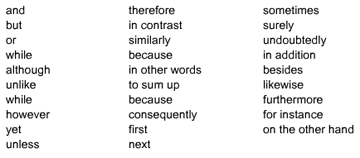|
Persuasive Writing
THE PLAN
- In persuasive writing, a writer takes a position for or against a topic and writes to convince the reader to believe something or
to do something.
- The writer needs to use facts or examples to back up his opinion in order to convince the reader.
Choose your topic and then make your plan.
Use the persuasion map to outline your ideas.

Click here for topic ideas.
WRITING THE ESSAY
Now that you have your topic and your ideas, you are ready to start writing.
Persuasive writing essays have 3 parts:
- Introduction: Make your thesis statement. The introduction has a "hook or grabber" to catch the reader's attention. Here are some possible openings:
1. Unusual fact: Did you know that 33% of litter in the United States comes from fast food waste?
2. Strong statement: It is a sad fact that most of the litter created in the United States today is simply a result of people being too lazy.
3. Quotation: The famous author, Henry David Thoreau, once said, "Water is the only drink for a wise man."
Or..... a humorous quote....
The comedian, Henny Youngman, once said, When I read about the evils of drinking, I gave up reading.
4. Story (very brief!) or Anecdote: These can be great attention getters if they are short and to the point.
5. Statistic or Fact: According to the WVDOT, a two-mile stretch of highway contains approximately 32,000 pieces of litter!
6. Question: (Have you ever considered how many books we'd read if it were not for television?)
7. Exaggeration or Outrageous Statement: Our wonderful world is being attacked--by litter!
- Body: This is the main part of the essay where the writer gives facts to support his opinion. (Practice on Scholastic's Mini-Lesson.) It should have at least 3 paragraphs. Each paragraph gives a reason to support the opinion the writer has. Try to predict what people with opposite ideas will be thinking and provide the counter-arguments needed. (Using words such as suppose that and what if should be helpful.)
Don't forget to use transition words:

Practice using these words in Scholastic's Mini-Lesson
- The Conclusion: A persuasive writing essay usually ends with a summary of the most important parts of the argument and stating once again what the reader is to believe or do.
- Restate your thesis statement.
- Summarize/paraphrase the main points:
-
Write a personal comment or call for action. You can do this:
- With a Prediction
- With a Question
- With Recommendations
- With a Quotation:
Persuasive Essay Outline
I. Introduction:
- Get the readers attention by using a "hook."
- Give some background information if necessary.
- Thesis or focus statement.
II. First argument or reason to support your position:
- Topic sentence explaining your reason.
- Explanation to back your point.
III. Second argument or reason to support your position:
- Topic sentence explaining your reason.
- Explanation to back your point.
IV. Third argument or reason to support your position:
- Topic sentence explaining your reason.
- Explanation to back your point.
V. Conclusion:
- Summary of main points or reasons
- Say again what you want your reader to say or to do.
- Closing sentence/personal comment or a call to action.
Persuasive Essay Rubric
|
Paragraph
|
Criteria
|
Score
4: excellent
3: good
2: fair
1: poor
|
|
Paragraph 1(Introduction)
|
- Introduction Includes a hook to get the reader's attention
- Thesis statement is clear
|
|
|
Paragraph 2
(First Argument)
|
- Topic sentence states the reason
Explanation to back up the reason is clear and persuasive
|
|
|
Paragraph 3
(Second Argument)
|
- Topic sentence states the reason.
Explanation to back up the reason is clear and persuasive
|
|
|
Paragraph 4
(Third Argument)
|
- Topic sentence states the reason
Explanation to back up the reason is clear and persuasive
|
|
|
Paragraph 5(Conclusion)
|
- Say again what you want the reader to believe or to do
Closing sentence (personal comment or a call to action)
|
|
|
Mechanics
|
- Sentence fluency
- Spelling and grammar
|
|
|
TOTAL
|
|

|

